10 Brilliant Sensory Activities for Autistic Teenagers
Simple Sensory Activities for Autistic Teenagers at Home
What Are Sensory Activities?
Sensory activities engage the senses, including sight, hearing, touch, taste, smell, motion, and balance. These activities can vary from simple exercises like listening to soothing music to more complex setups like sensory circuits. They are beneficial for autistic teenagers as they aid sensory integration, reducing anxiety and stress.
Sensory Integration Theory
Sensory integration theory, proposed by Jean Ayres, emphasises the importance of processing sensory information for a person’s overall well-being. Autistic teenagers often exhibit differences in sensory processing, which can lead to challenges in arousal levels and sensory seeking or avoidance behaviours.
Sensory Seeking in Autistic Teens
Autistic teenagers may engage in sensory-seeking behaviours to regulate their sensory systems. While this can help them manage their arousal levels, parents and teachers need to understand and support these needs with structured sensory activities.
Sensory Avoiding in Autistic Teens
On the other hand, sensory avoiding involves actively avoiding or withdrawing from sensory experiences that are overwhelming or distressing. This can impact a teenager’s quality of life and limit their participation in various activities.
Sensory Processing Disorder in Teenagers
Sensory processing disorder (SPD) occurs when individuals struggle to effectively process, organize, and respond to sensory information. Many autistic individuals experience SPD, which can significantly impact their daily lives and require tailored interventions.
Sensory Activities for Autistic Teenagers
1. Sensory Circuit
A sensory circuit is a series of activities designed to engage the senses and provide a calming environment. It involves identifying the teenager’s needs, gathering sensory materials (such as tactile objects, visual stimuli, and auditory cues), and creating a structured routine. Examples include jumping on a trampoline, swinging, or using therapy balls.
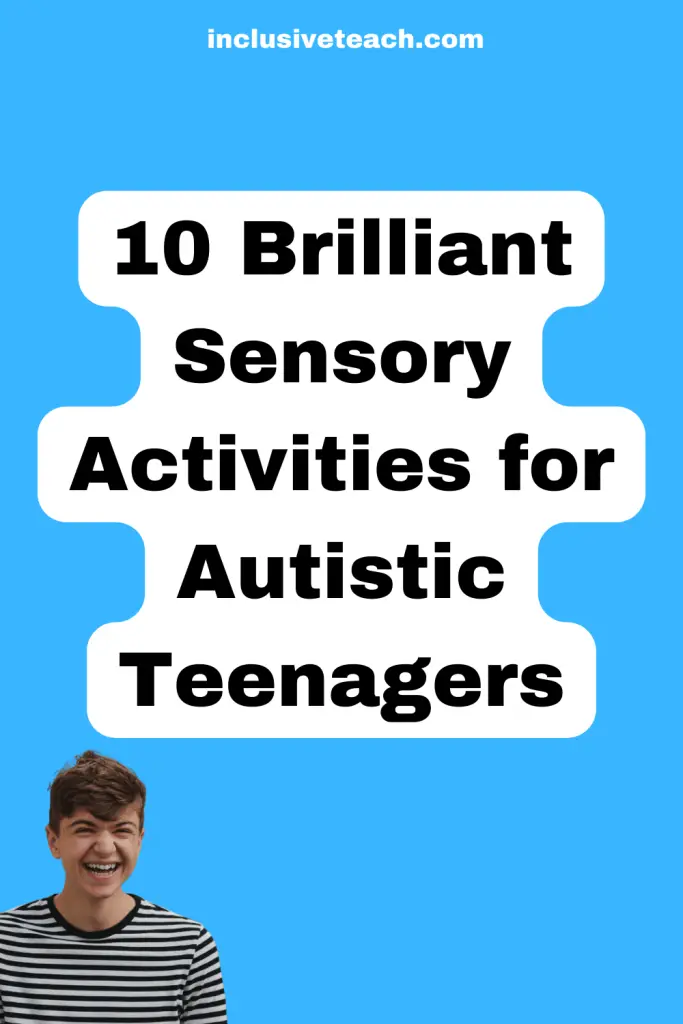
2. Sensory Diet
A sensory diet is a personalised plan that incorporates sensory activities throughout the day. Work with an occupational therapist to create a sensory diet tailored to your autistic teenager’s specific needs. It can include activities like brushing, joint compressions, and weighted vests.
- Consult with an Occupational Therapist (OT): An OT experienced in sensory processing issues can assess your teenager’s sensory profile. They’ll help identify overreactive or underreactive moments and tailor activities accordingly.
- Use Observational Checklists: Online checklists or resources like “Answers to Questions Teachers Ask about Sensory Integration” can provide valuable insights.
- Proprioception:
- Activities that provide deep pressure and heavy work:
- Pushing a stroller or cart.
- Pulling a wagon filled with objects.
- Carrying a backpack.
- Doing push-ups against a wall.
- Lifting weights.
- Wearing a weighted vest.
- Vacuuming.
- Swimming.
- Activities that provide deep pressure and heavy work:
- Vestibular (Sense of Movement):
- Activities involving movement:
- Swinging on a swing.
- Lying in a hammock.
- Spinning on a Sit n’ Spin or disc.
- Doing jumping jacks.
- Dancing.
- Activities involving movement:
- Tactile (Touch):
- Activities that engage the tactile sense:
- Playing with Lego.
- Hand massages.
- High fives.
- Playing with therapy putty or squeeze balls.
- Crocheting, knitting, or sewing.
- Messy play with shaving cream or foamy soap.
- Activities that engage the tactile sense:
- Auditory (Hearing):
- Use noise-cancelling headphones to reduce auditory sensitivities.
- Encourage deep breathing to trigger the calming response of the parasympathetic nervous system.
- Consistency: Incorporate sensory activities into daily routines.
- Home and School: Share the sensory diet with, teachers, and educational assistants.
What Is a Sensory Diet?
Creating a sensory diet for your autistic teenager involves tailoring activities to meet their sensory needs throughout the day. A sensory diet is an individualised plan of physical activities and accommodations designed to help a person meet their sensory needs. The goal is to provide the right sensory input to stay focused, organized, and regulated. For autistic teenagers, a sensory diet can significantly improve attention, sleep, socialization, and overall well-being.
1. Understand Your Teenager’s Sensory Profile
2. Choose Sensory Activities
Consider the following sensory systems and select activities based on your teenager’s preferences and sensitivities:
3. Implement the Sensory Diet
3. Visual Sensory Activities
Consider using visual aids to engage your teenager. Visual schedules, charts, and timers can help them understand routines and transitions. Visual supports provide predictability and reduce anxiety.
Adolescents often also benefit from engaging visual experiences that are both calming and enjoyable. Here are some ideas:
- Visual Search Challenges: Encourage teenagers to explore hidden picture puzzles or play word search games. These activities not only entertain but also enhance visual perception and attention. You can find printable puzzles online or create your own, I always liked Where’s Wally but we didn’t have the internet.
- Flashlight Adventures: In a dimly lit room, use a flashlight or a laser pointer to discover hidden objects or create shadow art on the walls. This activity encourages visual tracking and spatial awareness.
- Colourful Experiments: Set up simple colour mixing experiments. Use watercolours, food colouring, or even coloured markers to blend hues. Observe how colours change and create soothing visual patterns. YouTube has calming videos of swirling colours and fluid art that teenagers might enjoy.
- Guided Visualizations: Explore calming YouTube videos designed to relax the mind. Search for “calming visualizations” or “nature scenes” to find serene landscapes, ocean waves, or starry skies. These videos can help teenagers unwind and reduce stress. My eldest daughter puts this on to go to sleep.
- Nature Walks: Virtual walks through serene landscapes, forests, or beaches.
- Slow Motion Art: Videos capturing mesmerizing paint mixing, ink drops, or watercolor techniques.
- Cosmic Visuals: Space-themed animations or time-lapse videos of starry skies.
- Digital Puzzles: Try digital jigsaw puzzles on apps or websites. They provide the same visual challenge as traditional puzzles but with the convenience of a screen. Plus, you can choose themes like animals, landscapes, or fantasy art.
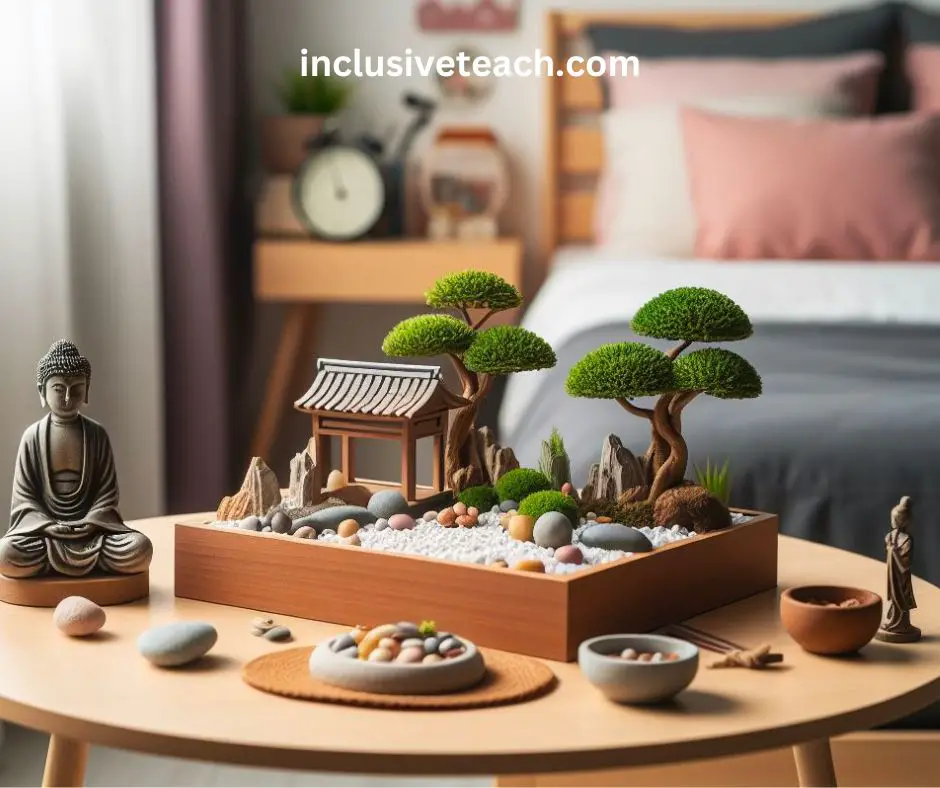
4. Texture Exploration
Encourage your teenager to explore different textures. Depending on their interests provide sensory bins filled with materials like rice, beans, sand, or water beads. Let them touch, manipulate, and explore these textures. If you want this to be more teenage friendly use a Japanese Zen Garden.
- Texture Exploration Box:
- Create a tactile exploration box filled with various textured items. Consider using materials like velvet, sandpaper, faux fur, or even different fabrics.
- Blindfold yourself and reach into the box to feel and identify each texture. It’s like a sensory guessing game!
- Textured Art Projects:
- Engage in creative art projects that involve textures:
- Mixed Media Collages: Combine textured materials like fabric scraps, newspaper clippings, and textured paper to create unique collages.
- Embossed Prints: Experiment with embossing techniques using aluminium foil or textured surfaces.
- Sculptures: Try your hand at sculpting using clay, wire, or other materials with interesting textures.
- Engage in creative art projects that involve textures:
- Visit a Sensory Garden:
- Seek out local sensory gardens or botanical gardens. These spaces are designed to engage all the senses, including touch, smell, and sight.
- Explore different plant textures, from soft petals to rough bark.
- Texture-Infused Cooking:
- Experiment with cooking or baking using ingredients with varying textures:
- Crunchy: Make homemade granola bars with nuts and seeds.
- Silky: Prepare a creamy risotto or a velvety chocolate mousse.
- Chewy: Bake oatmeal cookies with dried fruit or chewy caramel bits.
- Experiment with cooking or baking using ingredients with varying textures:
- Virtual Art Galleries and Museums:
- Explore online art collections. Many museums offer virtual tours where you can appreciate textures in paintings, sculptures, and artefacts.
- Pay attention to brushstrokes, canvas textures, and the interplay of light and shadow.
- Mindful Touch Meditation:
- Find a quiet space and sit comfortably.
- Close your eyes and focus on the sensations of touch. Run your fingers over different textures—a soft blanket, a cool stone, or a warm cup.
- Breathe deeply and immerse yourself in the tactile experience.
5. Calming Corners or Safe Spaces
A calming corner serves as a retreat where your teenager can find solace when feeling overwhelmed, anxious, or overstimulated. It’s a designated area that promotes relaxation and self-regulation. We have written a full article on Autistic Nesting which is perfect for a teenage bedroom. Here’s how to create one:
- Choose the Right Location:
- Select a quiet spot away from high-traffic areas, loud noises, and bright lights.
- Ideally, the calming corner should be in a corner of the room or against a wall.
- Soft Furnishings:
- Soft Cushions or Bean Bags: Place comfortable cushions or bean bags in the corner. These provide a cozy seating area.
- Weighted Blankets: Weighted blankets offer deep pressure input, which can be calming. Choose one that is appropriate for your teenager’s weight.
- Sensory Items:
- Lava Lamps or Bubble Tubes: These visual sensory items provide soothing, slow-moving patterns of light. They can help regulate emotions.
- Fiber Optic Lights: These gently changing lights can create a calming atmosphere.
- Glow-in-the-Dark Stars or Projector Lights: These add a touch of magic and create a serene ambience.
- Night Lights – these give a soft glow and are safe to keep on all night.
- Texture and Touch:
- Soft Fabrics: Include soft blankets or plush materials for tactile comfort.
- Fidget Toys: Provide small fidget toys or stress balls for tactile exploration and sensory input.
- Visual and Auditory Sensory:
- Nature Scenes: Hang calming nature posters or images on the wall.
- White Noise Machine or Relaxing Music: These can drown out background noise and promote relaxation.
- Personalization:
- Involve your teenager in decorating the calming corner. Let them choose colours, fabrics, and sensory items.
- Add a favourite stuffed animal or a photo of a loved one.
- Safety Considerations:
- Ensure that the calming corner is safe. Remove any sharp objects or hazards.
- Avoid clutter—keep it simple and uncluttered.
- Teach Self-Regulation Techniques:
- Show your teenager how to use the calming corner:
- Take slow, deep breaths.
- Use grounding techniques (focus on the senses: touch, smell, sight).
- Encourage them to express their feelings through drawing or writing.
- Show your teenager how to use the calming corner:
6. Nature Walks and Outdoor Exploration
Why Nature Matters for Autistic Teens
- Sensory Stimulation: Nature provides a diverse range of sensory input—visual, auditory, tactile, and olfactory. The rustling leaves, chirping birds, and textured surfaces all contribute to a multisensory experience.
- Calming Effect: Being surrounded by greenery and natural beauty can reduce stress and anxiety. Nature has a soothing effect on the nervous system.
- Physical Activity: Walking, climbing, and exploring outdoors promote physical well-being.
- Connection with the Environment: Nature fosters curiosity, wonder, and a sense of connection to the world.
Tips for Nature Walks and Exploration:
- Choose the Right Location:
- Local Parks: Explore nearby parks, nature reserves, or green spaces.
- Woodlands, Beaches, and Gardens: These diverse environments offer different sensory experiences.
- Observe and Collect:
- Leaves: Collect leaves of various shapes, sizes, and colors. Feel their textures and observe their veins.
- Pinecones, Acorns, and Seeds: Investigate these natural treasures.
- Rocks and Pebbles: Touch different types of rocks—smooth, rough, or jagged.
- Bark: Feel the texture of tree bark. Some are smooth, while others are rugged.
- Listen to Sounds:
- Birdsong: Identify different bird calls. Use a bird identification app if needed.
- Wind Rustling Through Leaves: Close your eyes and listen.
- Running Water: Visit a stream or river and listen to the soothing sound of water.
- Observe Wildlife:
- Birds, Insects, and Squirrels: Spot wildlife and discuss their behaviours.
- Butterflies and Bees: Observe their flight patterns and colours.
- Feel the Ground Beneath Your Feet:
- Barefoot Sensations: If safe, walk barefoot on grass, sand, or soil. Feel the earth beneath you.
- Explore Different Surfaces: Walk on gravel, moss, or fallen leaves.
- Smell the Scents:
- Flowers and Plants: Inhale the fragrances of blooming flowers.
- Fresh Earth: After rain, the earth smells rejuvenated.
- Mindful Observation:
- Sit Silently: Find a quiet spot and observe. Encourage your teenager to notice details—the patterns on a butterfly’s wings, the veins in a leaf, or the way sunlight filters through branches.
- Bring a Nature Journal:
- Sketch and Write: Encourage your teenager to sketch what they see or write about their observations.
- Press Flowers: Collect flowers and press them in the journal.
- Seasonal Changes:
- Spring: Look for blossoms and new growth.
- Summer: Enjoy the warmth, greenery, and longer days.
- Autumn: Witness the changing colours of leaves.
- Winter: Explore frost, snow, and bare trees
7. Sensory Art and Craft Projects
Engage your teenager in sensory-friendly art and craft activities. Use textured materials, play with clay, or create sensory bottles filled with glitter, water, and small objects.
8. Yoga and Mindfulness
Yoga and mindfulness practices can help regulate sensory input. Teach your teenager simple yoga poses, deep breathing techniques, and progressive muscle relaxation.
9. Sensory-Friendly Cooking
Cooking and baking can be delightful sensory experiences for autistic teenagers. Involving your teenager in the kitchen teaches valuable life skills and provides tactile and proprioceptive input. Here are some ways to make cooking sensory-friendly:
- Measuring Ingredients:
- Tactile Input: Let your teenager handle measuring cups, spoons, and scales. The act of scooping flour, sugar, or spices provides tactile feedback.
- Visual and Auditory Sensory: Discuss measurements aloud and observe the ingredients filling the cups or pouring into the bowl.
- Mixing and Stirring:
- Proprioceptive Input: Stirring batter, whisking eggs, or folding ingredients together engages the muscles and joints. Use a sturdy wooden spoon or spatula.
- Visual and Auditory Sensory: Observe the texture changing as ingredients combine. Listen to the sounds of mixing.
- Kneading Dough:
- Proprioceptive Input: Making bread or pizza dough involves kneading. The repetitive motion provides deep pressure input to the hands and arms.
- Tactile Sensory: Feel the dough’s texture—soft, stretchy, and pliable.
- Smell Sensory: The aroma of freshly kneaded dough can be comforting.
- Rolling and Cutting:
- Tactile and Visual Sensory: Roll out cookie or pastry dough using a rolling pin. Cutting shapes with cookie cutters adds a creative touch.
- Fine Motor Skills: Using small cookie cutters or shaping dough balls hones fine motor skills.
- Decorating and Garnishing:
- Visual and Tactile Sensory: Decorating cupcakes, cookies, or cakes with icing, sprinkles, or fruit engages the senses.
- Creativity: Encourage your teenager to express themselves through food decoration.
- Taste Testing:
- Taste Sensory: Involve your teenager in taste testing. Discuss flavours, textures, and preferences.
- Exploration: Introduce new ingredients and discuss their taste sensations.
10. Sensory Swings and Hammocks
Install a sensory swing or hammock indoors or in the garden. Swinging provides vestibular input and a sense of calm. You can get bolts to attach to ceiling beams and a swing inexpensively on Amazon.

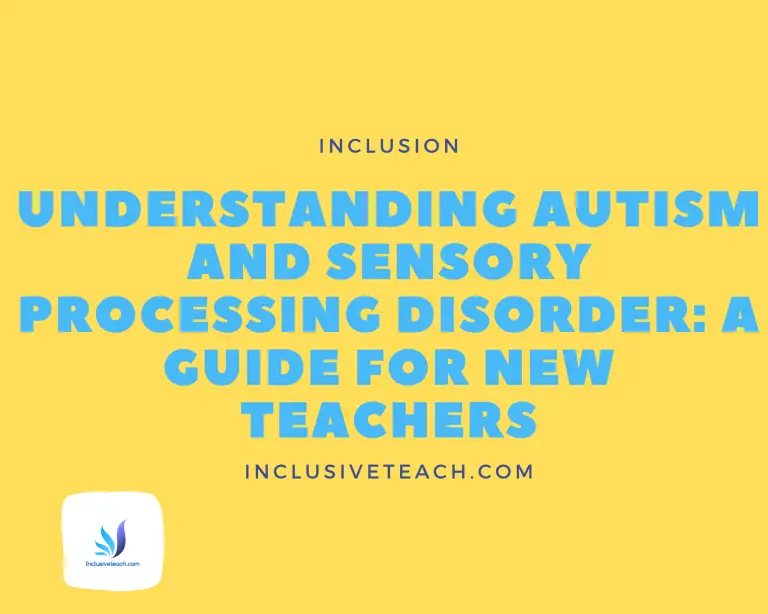
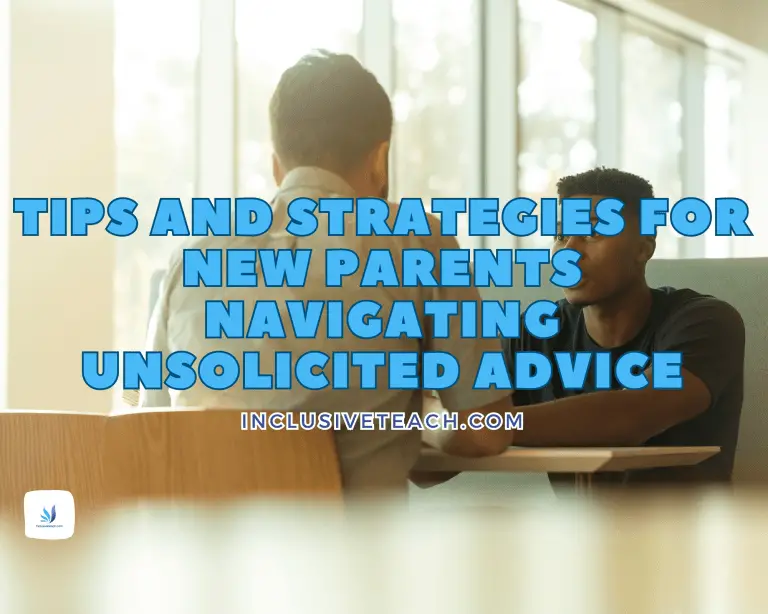


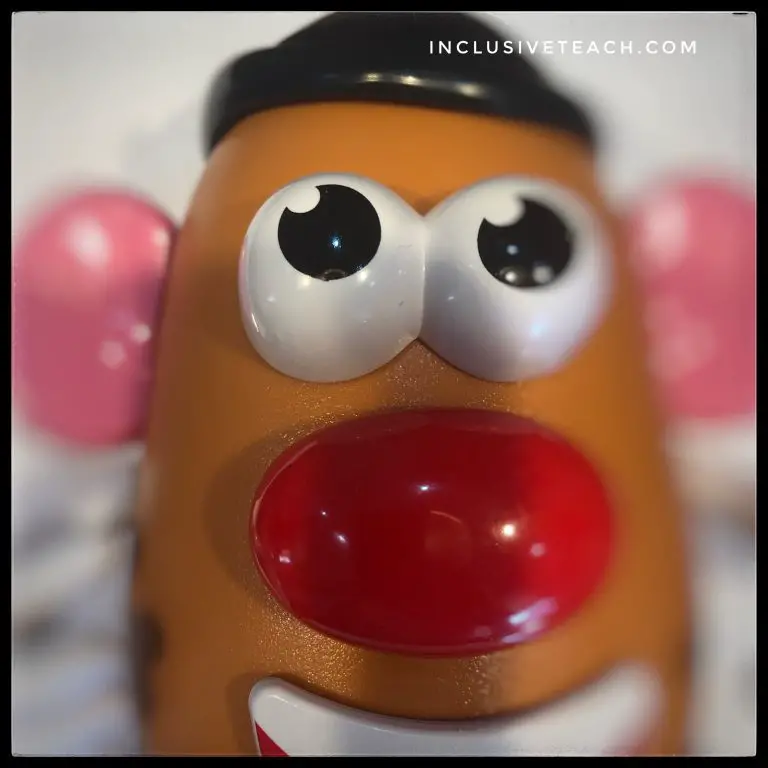

One Comment